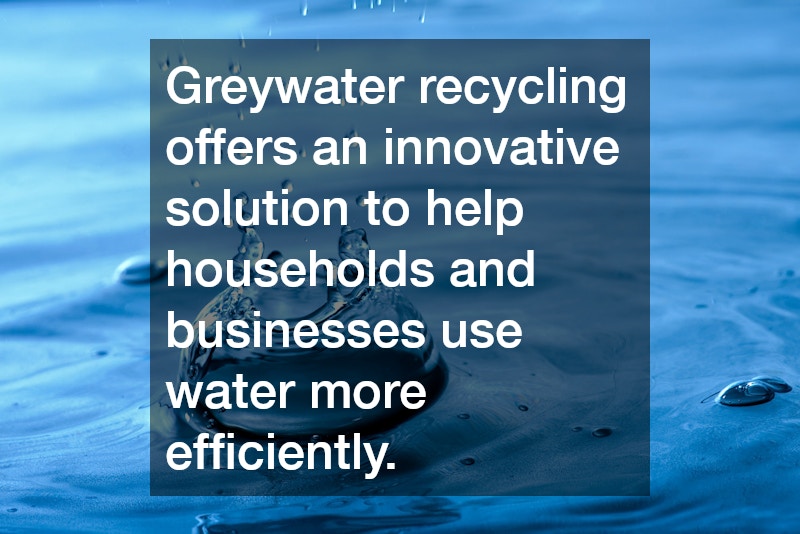Water conservation has become a crucial issue around the world, and greywater recycling offers an innovative solution to help households and businesses use water more efficiently. Greywater refers to the relatively clean wastewater generated from everyday activities such as washing dishes, doing laundry, and taking showers. Unlike blackwater, which comes from toilets and requires intensive treatment, greywater can be recycled for non-potable uses, making it an excellent way to reduce overall water consumption.
In this ultimate guide, we’ll explore what greywater recycling is, how it works, its benefits, and some essential tips for implementing a greywater system in your home or business.
What Is Greywater Recycling?
Greywater recycling is the process of collecting, treating, and reusing greywater for various purposes, such as landscape irrigation, flushing toilets, or even washing cars. This method helps reduce the demand for fresh water and minimizes the amount of wastewater that goes to treatment plants.
Greywater typically makes up 50-80% of household wastewater, and by recycling it, homes and businesses can significantly reduce their water usage. However, it’s important to note that greywater is not safe for drinking, cooking, or bathing without thorough treatment.
How Does Greywater Recycling Work?
A greywater recycling system typically involves three main steps: collection, filtration, and reuse. Here’s how it works:
-
Collection: Greywater is collected from sources like sinks, showers, and washing machines. Pipes redirect the water to a holding tank or filtration system rather than allowing it to go down the drain.
-
Filtration: The collected greywater is passed through filters to remove debris, soap particles, and other impurities. Some systems also use biological treatments or UV light to reduce harmful bacteria and pathogens, depending on the intended use of the recycled water.
-
Reuse: Once filtered, the greywater is stored in a tank for reuse in non-potable applications like irrigation, toilet flushing, or cleaning. This process ensures that water is used efficiently, minimizing waste.
Benefits of Greywater Recycling
Greywater recycling offers a wide range of benefits for both the environment and the people who implement it. Here are some key advantages:
1. Water Conservation
The most obvious benefit of greywater recycling is water conservation. By reusing greywater for tasks that don’t require potable water, such as watering plants or flushing toilets, households and businesses can reduce their consumption of freshwater by up to 50%. This is especially valuable in regions that face water shortages or droughts.
2. Reduced Utility Bills
By lowering your overall water consumption, greywater recycling can significantly reduce your utility bills. The more greywater you’re able to recycle, the less fresh water you need from the municipal supply, leading to long-term cost savings.
3. Environmental Sustainability
Greywater recycling contributes to environmental sustainability by reducing the strain on local water resources and wastewater treatment facilities. It also helps minimize the energy and chemicals needed for water treatment, which in turn lowers your carbon footprint.
4. Healthier Plants and Landscaping
Using greywater for irrigation can benefit your plants. The small amounts of nutrients found in greywater, such as phosphates from soaps, can act as natural fertilizers for your garden. Additionally, greywater recycling reduces the need for chemical fertilizers, making it an eco-friendly option for maintaining a healthy landscape.
Greywater recycling is an effective way to conserve water, reduce utility costs, and promote sustainability. By repurposing greywater for non-potable uses, households and businesses can make a significant positive impact on the environment while saving money. With the right system and careful planning, greywater recycling is a practical solution for anyone looking to reduce their water footprint.
.







